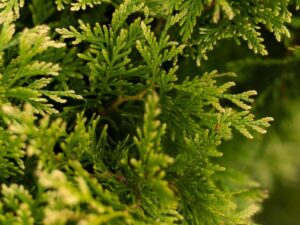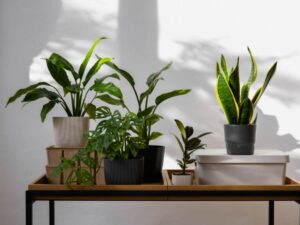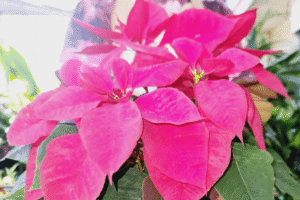5 Fruit Bearing Plants to Add to Your Garden

What fruit-bearing plants should I buy?
- Calamansi
- Tomato
- Eggplant
- Okra
- Pepper
If you’re someone with an ever-expanding garden, you may have considered adding some fruit-bearing plants. These kinds of plants can be the glory of your garden — not only are they pretty to look at, but they also provide you with crops to enjoy cooking up in the kitchen.
Looking for the best fruit-bearing plants to grow in a garden in the Philippines? As one of the top suppliers of fruit-bearing plants here in the Philippines, we have six of the best options for you to add to your plant collection. Not only do these plants provide delicious fruits, but they’re also easy to cultivate and maintain — even if you’re not an experienced plant parent!
Calamansi

Calamansi plants, also known as calamondin, are fruit-bearing plants native to the Philippines. They grow small white flowers that bear small citrus fruits over time.
Growing a calamansi tree in your backyard is a great choice — In Philippine cuisine, we use their fruit in many ways, such as in marinades, sauces, and juice.
This plant is much smaller than your typical tree — only growing up to 5 feet in pots, so it’s a good choice for those with limited garden space. To take good care of this plant, it’ll need full sun for at least six hours every day. And, it needs frequent watering and well-draining soil and pot to encourage fruit production. With proper care, your calamansi tree will bear fruit all year round.
Tomato

Tomato plants are a popular fruit-bearing plant for home gardens. There is a variety you can choose from — from Roma tomatoes to cherry tomatoes, all of which are relatively easy to grow.
A tomato plant will thrive in warm, moist conditions. We recommend growing in seedling trays if bought as seeds, before transplanting to the soil when the plant is one month old. Your tomato plant needs some extra TLC in the form of loam soil, which is higher quality and more nutritious.
Tomato plants love sunlight and need at least six hours of direct exposure every day — just be careful not to place them where they can get too much, as they will wilt. You may also need to stake and prune your tomato plant occasionally to control its vine-like growth.
Eggplant

Eggplant trees are a good choice for plant enthusiasts as they’re a bit more sensitive than the other plants on this list. Under the right conditions, they bear edible fruit in a short time — producing their glossy dark fruits every three to four weeks, which is great for your kitchen.
An eggplant tree can grow up to four feet tall and wide, so they need some extra space in your garden. They grow best in full to bright, indirect sunlight, so we recommend giving this plant at least six hours of sunlight every day to encourage fruit production.
They also need well-draining soil and frequent watering, as this plant prefers their soil to be kept moist. We recommend watering your eggplant tree at least every other day, as long as the top layer of their soil is completely dry before watering.
Okra

Though some people have a love-hate relationship with okra, it’s a popular ingredient in many Filipino dishes, making it a welcome guest in most family kitchens. If you’re someone who enjoys them, the good news is that they are very easy to grow right in your backyard.
Okra is a warm-weather crop, so your plants would appreciate having hours of full sun exposure. This plant is also very adaptable and will grow well in most soil types. Make sure to leave some space for it to grow, as it can reach heights of 6 feet and widths of 3 feet.
About 50 days after planting, your okra plant will start producing fruit. These are best harvested when around 2-3 inches long. Make sure to cut them at that point, as they turn tough and stringy quickly.
Pepper

Pepper plants are of the same family as tomato plants, so they have similar growing difficulties and needs. Of all the pepper plants you could cultivate in your backyard — such as bell pepper, sweet peppers, and many more — the best variety to start with is the bird’s eye chili peppers or siling labuyo. These are native Filipino plants and will thrive under our warm and humid climate.
If you get this plant as a seed, start growing it in a seedling tray. Use some potting mix and water only when the soil is fully dry. After around eighteen days, you should see healthy chili plant sprouts. At this point, you can transfer it to a garden plot or container. Water every three days, and add fertilizer to encourage its growth. After around two and a half months, your chili plant should start producing chilies for you to enjoy.
Key Takeaway
Adding pretty and useful fruit-bearing plants to your ever-growing plant collection is a great idea. With some healthy and fast-growing calamansi plants or eggplant trees from Unbeleafable, you can start producing your very own home-grown crops for you and your family to enjoy.
Want to add more kinds of interesting and beautiful plants to your home garden? Browse through our plant collection. We have all sorts of plants for every kind of plant lover out there — from pet-friendly options, to flowering plants to brighten up your space, we have a great pot of nature for everyone!
Fresh Drops
Already have most of the plants in our catalogue? Check out our fresh drops that will surely make you want to add more to your growing plant collection!
RECENT POSTS
-

Cypress Tree for Your Corner This Christmas: Tips for Decorating in the Philippines
-

Festive Indoor Plant Arrangements for Your Home and Restaurant
-

Best Plants for Christmas Giveaways in the Philippines
-

Why Poinsettias Are the Ultimate Christmas Plant in the Philippines
-

The 5 Best Plants for the Office According to Plant Experts
-

Injecting Life into Breaks: The Benefits of Plants in the Office Pantry
-

Reasons to Have Plants in Your Restaurant
-

Best Plants for Vertical Wall Garden
-

Benefits of Vertical Office Wall Gardens








